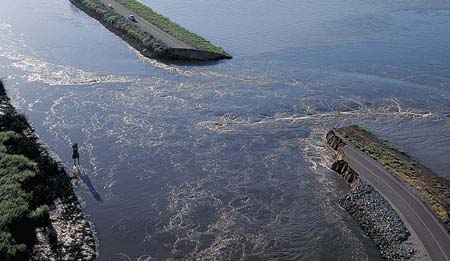All Issues
Report: Delta failure costs could top $40 billion
Publication Information
California Agriculture 61(2):53-53.
Published April 01, 2007
PDF | Citation | Permissions
Full text
The costs for a single episode of unexpected levee failure in the Sacramento-San Joaquin Delta could reach $40 billion, according to a report released in February by the nonprofit Public Policy Institute of California and written in collaboration with five UC Davis professors.
The Delta's 1,100 miles of levees are increasingly vulnerable to earthquakes, floods, subsidence and other factors. The cost to repair the Jones Tract Levee, which failed in June 2004, was $90 million.
The 300-page report, Envisioning Futures for the Sacramento-San Joaquin Delta, found that such an episode would affect drinking water for millions of people and agricultural animals, such as the state's huge dairy herd, as well as irrigation water for food crops and water supplies for industry.
“After Hurricane Katrina, people realized that catastrophic collapse of these levee and water systems is a very real possibility,” says co-author Richard Howitt, UC Davis professor of agricultural and resource economics. “There's a 64% probability of something like this happening in the next 50 years. That's too high for public infrastructure.”
According to the report, the Delta is increasingly threatened by floods, earthquakes, sinking land, rising sea levels, regional climate change, invasive species and urbanization. CALFED, the government consortium charged with solving the Delta's problems, is itself challenged by underfunding and internal dissent.
The report considers nine alternatives for Delta management and evaluates the performance of each in three key areas: water supply, environmental effects and economic costs.
The authors recommend that scientific work in the Delta be refocused on a new problem-solving framework that includes levee replacement, ecosystem adaptation, flood control and island land management.
In addition to PPIC research fellow Ellen Hanak, the interdisciplinary team of UC Davis professors included Howitt; Jeffrey Mount, UC Davis Center for Watershed Sciences director; Peter Moyle, Department of Wildlife, Fish and Conservation Biology; and William Fleenor and Jay Lund, Department of Civil and Environmental Engineering.
The full report is available at: http://www.ppic.org .





